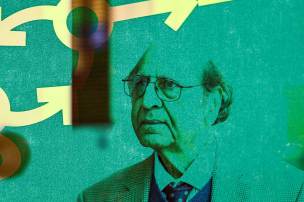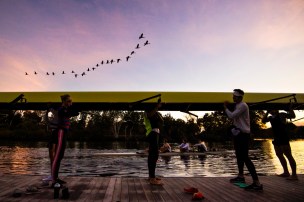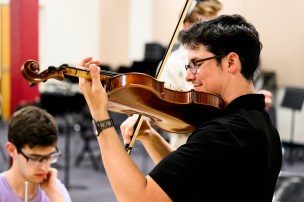Published on
These Northeastern graduates are improving our neighborhoods
one tree at a time
The drive to plant and care for trees in urban areas has never been more important. And the Northeastern community is doing its part in Greater Boston.
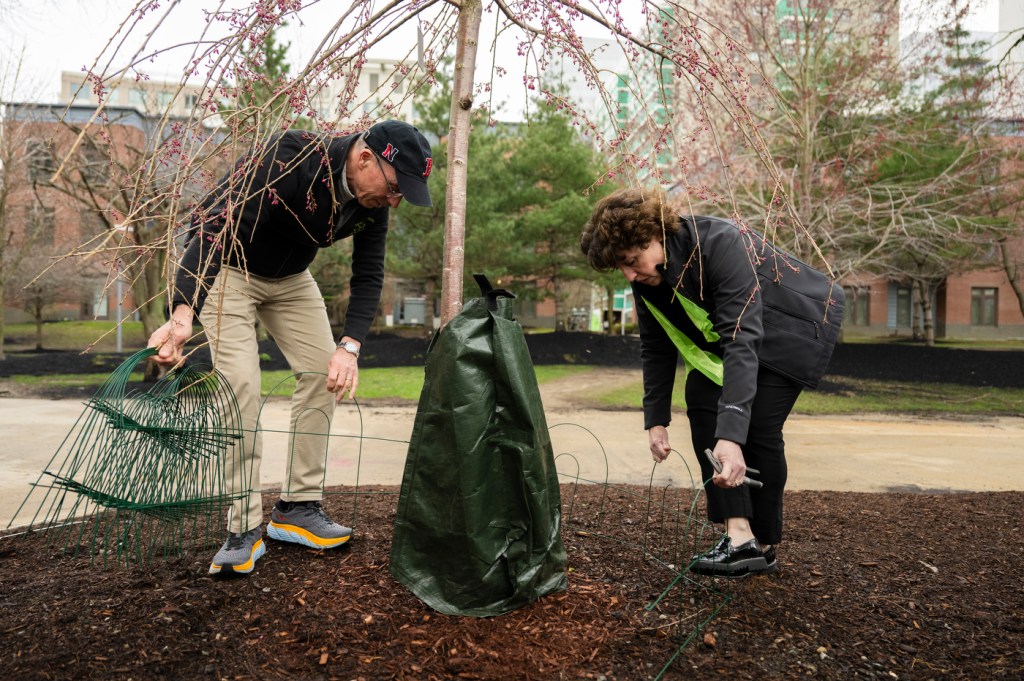
Cathy Griffin wasn’t always a tree lover.
“I hated trees,” she says of her former life in Acton, Massachusetts, a suburb of Boston.
Tom, her husband, didn’t exactly enjoy raking leaves. He and Cathy were fed up with paying to have trees removed from their property.
Their perspective changed in 2019 when they decided to move into the city. As they walked around their new neighborhood, it occurred to them that something was missing.
Trees.
“During COVID, I was working a million hours,” she says of the isolated lifestyle created by the pandemic. “I was looking out the window and I realized, ‘Oh my gosh, it really does improve mental health’ — you look at a tree, you hear the birds. It really helps.”Dovetailing with that revelation were Northeastern Global News stories, including one about the drought of 2022. As proud Northeastern graduates, it occurred to Cathy and Tom that something had to build the tree population in their urban neighborhood — and that they should be the ones to do it.
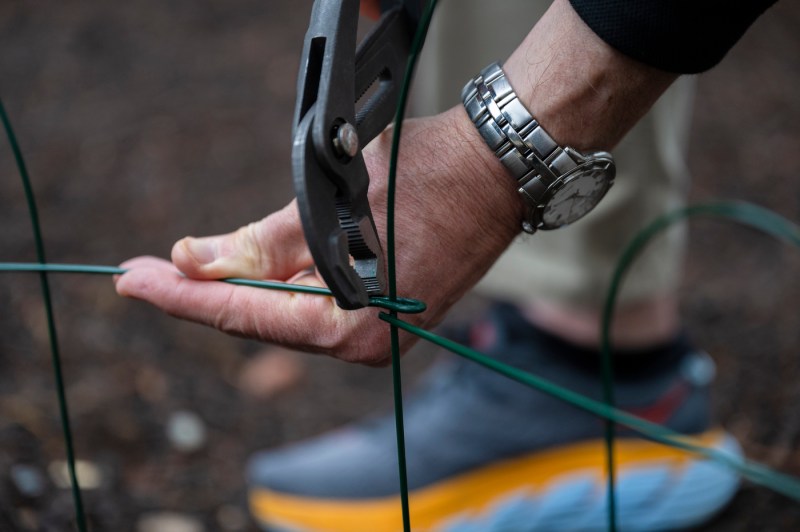
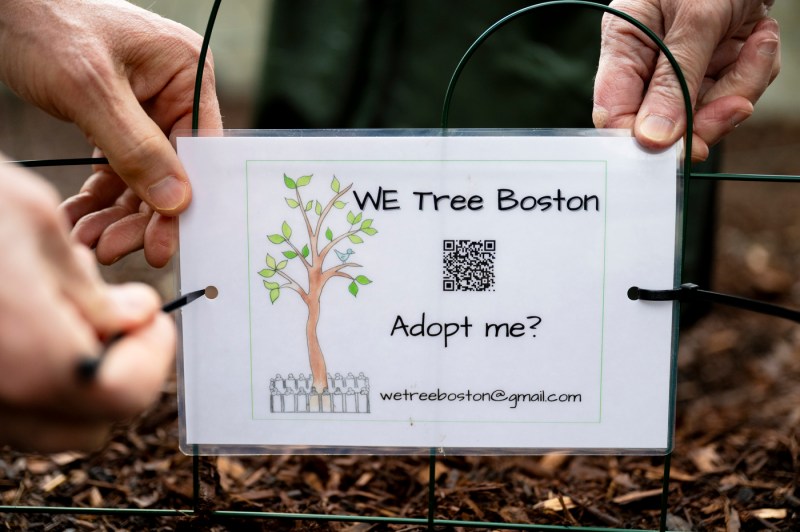
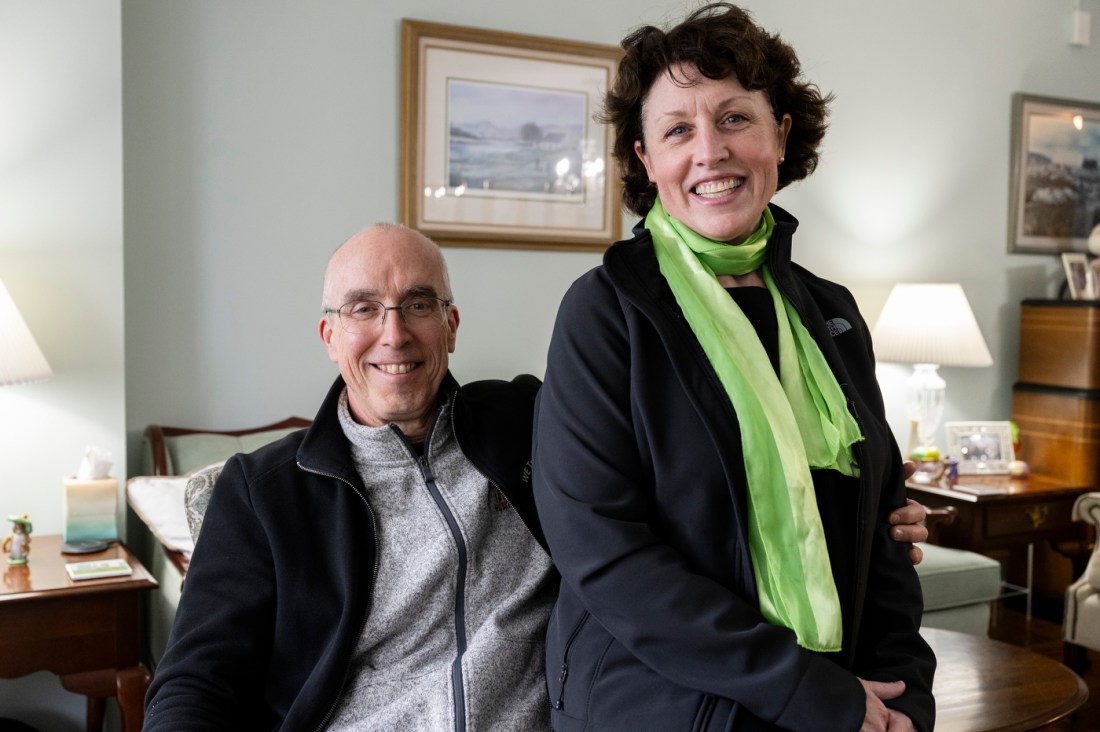
They started WE Tree Boston, a nonprofit devoted to tree education, planting and maintenance in the West End of Boston not far from TD Garden. Over the past two years the Griffins and their team of volunteers have planted 19 trees and 35 seedlings with the guidance and support of Northeastern’s arborist, Stephen Schneider.
The drive to plant and care for trees in urban areas has never been more important. A single tree is capable of absorbing upwards of one ton of carbon dioxide. Trees cool the air, increase property values and may help reduce crime rates, according to a Baltimore study that linked a proliferation of trees with a decrease in crime.
As WE Tree Boston prepares for Earth Day (on April 22) and Arbor Day (April 26) — a national day of tree planting — Cathy Griffin has a sense that her newfound love of trees was meant to be, based on her Northeastern affiliation.
“I think it’s amazing that there are so many groups at Northeastern that are helping,” she says.
A list of like-minded people in Griffin’s orbit begins with Kate England, the Northeastern graduate who in 2022 was named as the city of Boston’s first director of green infrastructure; Nora Masler, a Northeastern graduate student who is serving as assistant planner in (ironically) Acton, the Griffins’ former home; and Bill Masterson, a Northeastern graduate who founded Tree Eastie, a nonprofit that is transforming the environment of East Boston, which serves as home to Logan International Airport.
“I’ve always liked gardening,” says Masterson, who studied finance at Northeastern. “I enjoy being outdoors, but I don’t have any type of background at all around horticulture.”
This is how a movement starts: The seeds of a good idea sprout into something larger.
‘It’s a health issue’
Like the Griffins, Masterson and his wife moved from a suburb into the city five years ago. He had retired after three versatile decades with Gillette, where he worked in accounting, marketing, sales, business development and integration after the company was bought by Proctor & Gamble.
He was looking for something to do in East Boston.
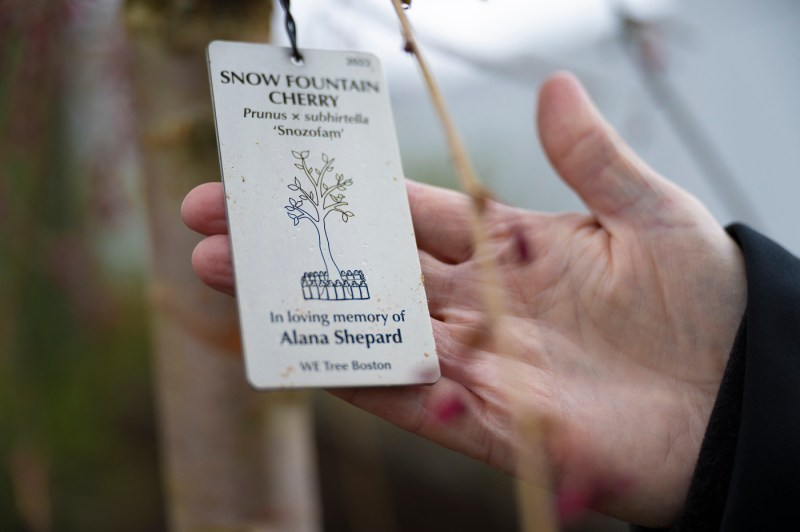
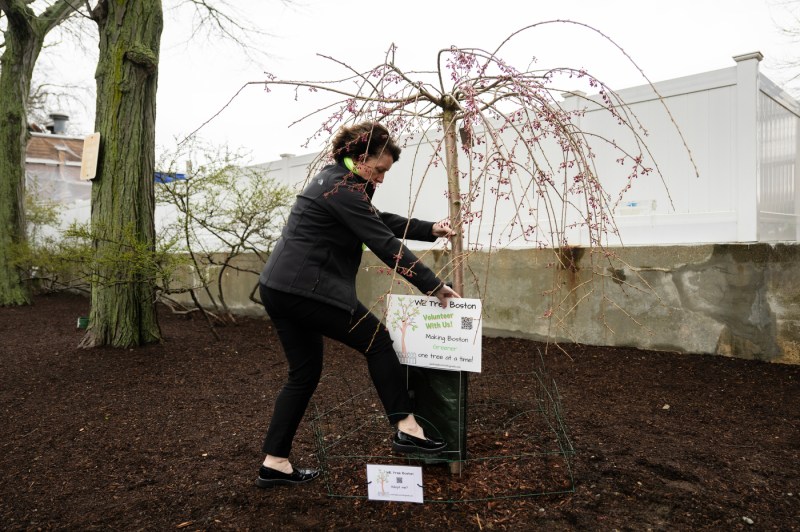
“I just didn’t see many trees at all,” Masterson says. “The more I looked into it and talked to people, I found out that East Boston has the lowest tree canopy in the city at 7%.”
That canopy — the percentage of a city that is shaded by trees — can be assessed using satellite imagery as well as LiDAR (light detection and ranging), an instrument made up of a laser, scanner and GPS receiver. Planes or helicopters are used to map out broad areas using lidar technology.
Masterson says an “appropriate” tree canopy for U.S. cities is 30%.
“The city of Boston has an average of 27%,” he says. “So in Eastie we’re well below the average. We’re an environmental justice community, marginalized with a heavy immigrant population. So there are a lot of good reasons why we should be planting more trees.”
East Boston’s need for trees is especially obvious on hot summer days.
“They take snapshots to see what the daytime temperature is in various parts of Boston, and almost the entire neighborhood of East Boston is one big hot spot,” Masterson says. “On the map it shows bright red, which means that the daytime temperatures in the summer are much higher on average than other parts of Boston.
“These heat islands are caused by not having any shade on the asphalt and so the asphalt heats up. You can imagine if you’re standing on asphalt versus in a park, you’re going to be a lot warmer on the black asphalt. It’s a health issue — the heat’s not good and the sun rays are not good.”
Tree Eastie planted its first tree in October 2021 after signing an agreement with the city.
“They just don’t let anybody go out and plant trees on sidewalks,” says Masterson, who has received support from Schneider. “So it took a little bit of convincing that we knew what we were doing and that we were funded and that we could do what we promised that we would do. And ever since then we’ve had a great relationship with the city. We really rely on them and they rely on us. It’s a good partnership.”
Tree Eastie numbers more than 300 volunteers who are led by a core group of 30 to 40 that Masterson counts on. They’ve planted more than 300 trees while filling almost every vacant tree well in East Boston.
“I identify where we’re going to be planting trees and volunteers sign up to help with the tree planting,” Masterson says. “That usually involves digging a hole that’s two and a half feet by two and a half feet by two and a half feet — because it has to be a good-sized three, especially if it’s a street tree. And then we’re on the hook for watering that tree. Any tree that we plant on city property, they want us to take care of it.
“There’s appreciation for the work that we’re doing because people know that trees are a good thing. Every year it seems like people are more and more attuned to the value and benefits that trees provide. It wasn’t always that way.”
Arbor Day plans
The Griffins are walking along Thoreau Path in the West End, pointing out the young trees they and their fellow volunteers have planted and are caring for — a sweet bay magnolia, a pink weeping cherry, a Japanese maple and others. Cathy Griffin is seeking Community Preservation Act funding that will allow her group to plant bigger trees (which are more likely to survive) and care for the 250 mature neighborhood trees that need watering and care.
Along the way they run into a couple of WE Tree Boston supporters — a local optometrist and the pastor of a local church.
“Dogs pee on trees and that kills [young] trees, rabbits eat the trees — I didn’t realize it’s hard to keep them alive,” Griffin says. “Trees need at least 15 gallons of water once a week, if not three times a week.”
The neighborhood lacks outdoor spigots, which means WE Tree Boston volunteers must lug the water from tree to tree.
One problem the Griffins have noted is that developers, property owners and residents are not incentivized to keep and maintain trees. But that may be changing with the new public tree protection ordinance that was signed in January by Boston Mayor Michelle Wu, which establishes regulations to preserve trees on city-owned property.
“It’s a really big step,” says Masler. “Aside from the direct benefits in terms of the trees that it will protect, it’s also going to increase the communication and understanding across city departments — setting up a process for the protection of trees.”
As an urban planning and policy graduate student at Northeastern, Masler’s research has shown that individual homeowners are responsible for significant losses of trees in urban areas. Masler hopes that a second tree ordinance — this one protecting trees on private property — may be on the horizon for Boston.
England, the Northeastern graduate who oversees environmental matters for Wu, has played an important role in these efforts.
The Griffins say the community is behind their efforts. And they feel the momentum building as progress is made. Griffin’s employer, dentsu, will be visiting in June to donate and plant five trees (in addition to the 10 that the company has already introduced to the neighborhood). In all, 15 new trees will be planted this spring.
On Arbor Day, Schneider will visit the West End to plant a second tree that has been donated by Northeastern.
“Stephen has been my biggest supporter — dedicating endless hours to helping me get arboretum status, consulting with me on new plantings, educating me on how to care for our trees,” Griffin says. “And we are so grateful for the support from so many others from Northeastern.”
Schneider’s team of co-ops will tag the neighborhood trees as a key part of Griffin’s goal to earn arboretum status. And a creative “deep watering solution” will be installed by Northeastern mechanical engineering students Alia Bent, Isabella Guzman, Max Moeller, Blair Seo and Megan Severs, who designed it for WE Tree Boston as their capstone project.
All of these efforts encourage residents to take a sense of ownership of their neighborhood as they work together to make it greener, healthier and more beautiful.
“We’re here to stay,” Griffin says. “And we’re going to make a difference.”
Ian Thomsen is a Northeastern Global News reporter. Email him at i.thomsen@northeastern.edu. Follow him on X/Twitter @IanatNU.






